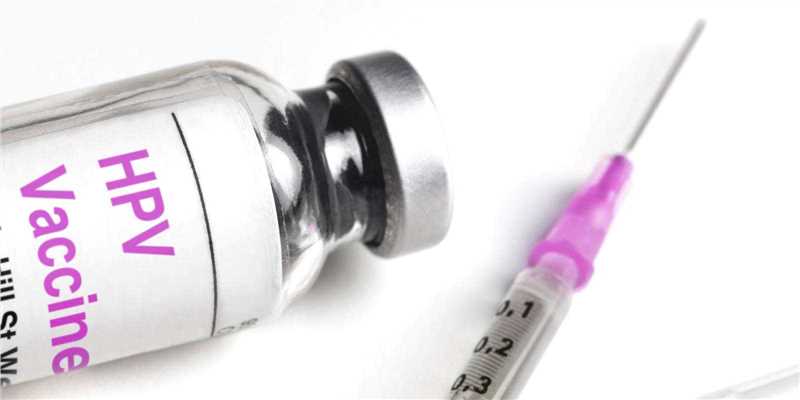HPV Vaccines
Creative Biolabs is a world leader in the field of vaccine development and is specialized in providing HPV vaccine development services. With our extensive experience and advanced platform, we are therefore confident in offering the best vaccine development services for different types of HPV related diseases. We guarantee the finest results for our customers all over the world.

Human Papillomavirus
HPVs are non-enveloped, double-stranded DNA viruses, which are tropic for mucosal tissues. The genome consists of three functionally divided regions: (a) a noncoding regulatory region; (b) an early proteins region, which encodes for six early proteins (E1, E2, E4-E7); and (c) a late region, which encodes for the viral capsid proteins L1 and L2. HPVs infect basal epithelial (skin or mucosal) cells. More than 200 HPV genotypes have been identified. Oncogenic genotypes include HPV 16, 18, 31, 33, 35, 39, 45, 51, 52, 56, 58, 59, and 66.
Biology of HPV Infection
The development of squamous cervical cancer, other anogenital cancers, and head and neck cancers occur in the setting of a persistent infection with an oncogenic HPV. Virtually all squamous cancers of the cervix (SCCx) and its precursor, HGSILs/CIN2/3, are caused by HPV, most commonly HPV16. The development of both cervical cancer and HGSIL/CIN2/3 is associated with the integration of the HPV genome into the host genome and subsequent expression of two HPV early gene products, E6 and E7, which inactivate p53 and pRb, respectively. Viral integration sites, though randomly distributed within the human genome, occur principally at sites where human DNA is prone to breakage (eg, fragile sites), and appear to affect only the expression of the HPV genome itself. Specifically, E1 and/or E2 are most frequently disrupted in integration, whereas the E6 and E7 viral oncogenes are retained, resulting in constitutive expression. Expression of both E6 and E7 is functionally required to initiate and maintain neoplastic transformation. Morphologically at the cellular level, high-grade intraepithelial lesions are characterized by a high nuclear-to-cytoplasmic ratio. Histologically, high-grade lesions display full-thickness lack of cell maturation and are mitotically active.
Preventative HPV Vaccines
Current methods for preventing HPV disease include screening, using either cytology or HPV testing, or a combination of both. Prophylactic vaccines that protect against infection with oncogenic HPV genotypes are comprised of noninfective recombinant virus-like particles (VLPs) of L1, one of the two HPV capsid proteins. These VLPs do not contain viral DNA, and thus are completely noninfectious and nononcogenic. All are highly effective against HPV infections not only in the cervix but also other anatomical sites, in both sexes. These vaccines elicit robust antibody responses that are 1 to 2 logs greater than those elicited by natural infection. In persons known to have been previously exposed to HPV, a single vaccination with qHPV drastically enhanced both the magnitude and the quality of the antibody response. In contrast to the nonneutralizing antibodies generated by natural infections, antibodies elicited by vaccination were neutralizing. Emerging evidence suggests that vaccination with a preventative vaccine after excisional treatment of CIN2/3 significantly decreases the likelihood of disease recurrence.
Therapeutic HPV Vaccines
In contrast to the prophylactic vaccines, the development of new therapeutic vaccines is focused on targeting E6 and E7. Effector T cell responses to these viral, non-self oncoproteins, which are constitutively expressed by transformed cells, are likely to play a role in mediating lesion regression. Persons with preinvasive disease present an unparalleled opportunity to determine proof-of-principle for immunotherapeutic strategies. These lesions are directly accessible and clinically indolent, providing an opportunity to assess the relevant tissue before and after intervention. Moreover, a subset of patients does respond, thereby making it possible to determine either pretreatment characteristics that predict therapeutic effect, or characteristics of induced immune responses that predict therapeutic benefit. Tissue studies will also afford the ability to determine mechanisms of immune suppression mediated by different stages of HPV disease. Several vaccine platforms have been evaluated, including naked DNA; DNA administered with electroporation; viral vectors, including modified vaccinia Ankara (MVA) and vaccinia virus; peptides administered with adjuvant; and bacterial constructs, such as Listeria monocytogenes.
HPV Related Diseases
Creative Biolabs is developing HPV vaccines against the following diseases:
- Non-Melanoma Skin Cancer (NMSC): Basal Cell Carcinoma (BCC), Squamous Cell Carcinomas (SCC)
- Genitourinary Malignancies: Penile Cancer
- Gynecologic Malignancies: Cervical Cancer, Vulvar Cancer, Vaginal Cancer
- Gastrointestinal Cancers: Anal Cancer
- Head and Neck Cancers: Oral Cancer, Oropharyngeal Cancer
Creative Biolabs is a leader in the field of vaccine development and has focused on HPV vaccines for years. We have experts who are able to help you with the vaccine development for different types of HPV related diseases. If you are interested in our services, please contact us for more details.
All of our products can only be used for research purposes. These vaccine ingredients CANNOT be used directly on humans or animals.

